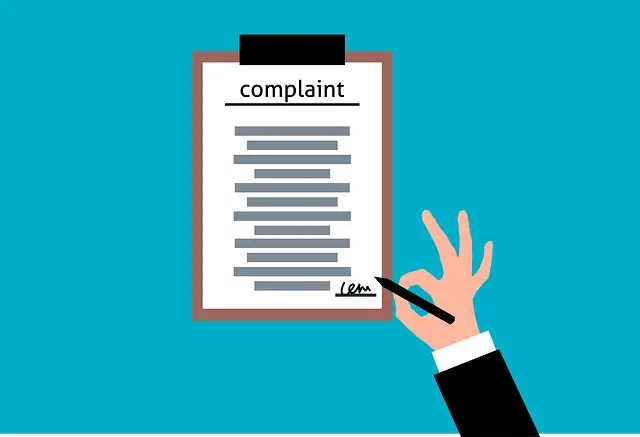An ombudsman is an independent body that investigates complaints against the government or other organizations. A Sandiganbayan is a specialized court that hears cases involving government officials accused of corruption.
What is an ombudsman?
(Photo by City of Detroit on Flickr)

An ombudsman is an independent official or organization that is appointed to investigate and resolve complaints and disputes between individuals and organizations, particularly in matters related to government, public services, and private companies. The role of an ombudsman is to provide an impartial and confidential service for individuals who feel that they have been treated unfairly or have not received the service they are entitled to.
The ombudsman typically has the authority to investigate complaints, gather information, and make recommendations for resolution. They may also provide advice and guidance to individuals on their rights and options for resolving their complaints. Ombudsmen are typically appointed by government or other public bodies, but may also be appointed by private companies or organizations.
What is Sandiganbayan?
Sandiganbayan is a special court in the Philippines that is responsible for the prosecution and trial of government officials and employees accused of graft and corruption. The court was established in 1978 and is composed of five divisions, each with three justices.
Sandiganbayan has jurisdiction over cases involving officials of the Philippine government, including those of the national and local levels, and other public officers charged with graft and corrupt practices in the Philippines. The court has the power to impose penalties, including imprisonment, fines, and forfeiture of assets.
The creation of Sandiganbayan is part of the Philippines’ efforts to combat corruption and promote good governance. The court has played a key role in holding government officials accountable for their actions and ensuring that they are held to high standards of ethical conduct.
Ombudsman Vs. Sandiganbayan – Key differences
The key differences between Ombudsman and Sandiganbayan are as follows:
Role: The Ombudsman is responsible for investigating complaints and resolving disputes related to government and public services, while Sandiganbayan is responsible for the prosecution and trial of government officials accused of graft and corruption.
Jurisdiction: The Ombudsman has jurisdiction over all government officials and employees, while Sandiganbayan has jurisdiction only over government officials accused of graft and corruption.
Powers: The Ombudsman has the power to investigate complaints and gather evidence, while Sandiganbayan has the power to impose penalties, including imprisonment, fines, and forfeiture of assets.
Composition: The Ombudsman is composed of a single official, while Sandiganbayan is composed of five divisions, each with three justices.
Appointment: The Ombudsman is appointed by the President of the Philippines, while Sandiganbayan justices are appointed by the President from a shortlist submitted by the Judicial and Bar Council.
Both the Ombudsman and Sandiganbayan are important institutions in the Philippines’ efforts to combat corruption and promote good governance, their roles and functions are distinct and complementary.
Who can file a complaint to the ombudsman?
The Office of the Ombudsman is tasked with investigating complaints against government officials and employees. Any individual may file a complaint with the office, regardless of whether they are directly affected by the alleged misconduct. The ombudsman will then decide whether to investigate the matter further.
How to file a complaint to the ombudsman?
If you have a complaint against a government agency or official, you can file a complaint with the Office of the Ombudsman. The ombudsman is an independent body that investigates and resolves complaints against the government.
To file a complaint, you will need to submit a written complaint form, which is available on the Office of the Ombudsman website. You will need to provide your name, contact information, and details about your complaint. Once your complaint is received, it will be assigned to an investigator who will look into the matter and determine whether there is merit to your claim.
If you are not satisfied with the outcome of your complaint, you can appeal to the Ombudsman Commission, which is composed of seven members who review cases and make decisions on whether or not to take action. The Commission has the power to investigate and prosecute officials for graft and corruption.
What is the role of the Ombudsman?
The role of the Ombudsman is to investigate complaints and resolve disputes related to government and public services. The Ombudsman is an independent official who serves as a watchdog for citizens, ensuring that the government and its officials are accountable and transparent in their actions.
The Ombudsman has several key responsibilities:
- Investigating complaints: The Ombudsman receives and investigates complaints from citizens about government agencies, officials, and employees. This includes complaints about corruption, abuse of power, and other forms of misconduct.
- Promoting transparency and accountability: The Ombudsman works to promote transparency and accountability in government by ensuring that officials are following the law and acting in the public interest.
- Resolving disputes: The Ombudsman has the power to mediate and resolve disputes between citizens and government agencies. This can include disputes over benefits, services, or other issues.
- Recommending reforms: Based on its investigations and findings, the Ombudsman may make recommendations for reforms in government policies and procedures to improve transparency, accountability, and the delivery of public services.
- Educating the public: The Ombudsman also plays a role in educating the public about their rights and responsibilities, as well as the role of government in serving the public.
What is the role of the Sandiganbayan?
The role of the Sandiganbayan is to prosecute and try government officials accused of graft and corruption in the Philippines. The court was established in 1978 as part of the government’s efforts to combat corruption and promote good governance.
The Sandiganbayan has several key responsibilities:
- Investigation: The Sandiganbayan does not have investigative powers, but relies on other government agencies such as the Ombudsman to conduct investigations and gather evidence against accused officials.
- Prosecution: The Sandiganbayan is responsible for prosecuting government officials accused of graft and corruption. The court has the power to conduct trials, issue subpoenas, and gather evidence.
- Adjudication: The Sandiganbayan is responsible for adjudicating cases against government officials accused of graft and corruption. The court has the power to impose penalties, including imprisonment, fines, and forfeiture of assets.
- Appeals: The Sandiganbayan decisions can be appealed to the Supreme Court of the Philippines, the highest court in the land.
What are the 4 pillars of ombudsman?
An ombudsman is an independent, neutral party who investigates and resolves complaints on behalf of the public. The office of ombudsman is found in many countries, and each ombudsman has different powers and responsibilities. In general, the four pillars of the ombudsman are:
- Independence: The ombudsman must be independent from the government in order to be impartial.
- Neutrality: The ombudsman must be neutral and not take sides in any dispute.
- Impartiality: The ombudsman must be impartial and treat all parties fairly.
- Investigations: The ombudsman must investigate complaints and resolve them in a fair and just manner.
Featured Image By – Donate PayPal Me from Pixabay









